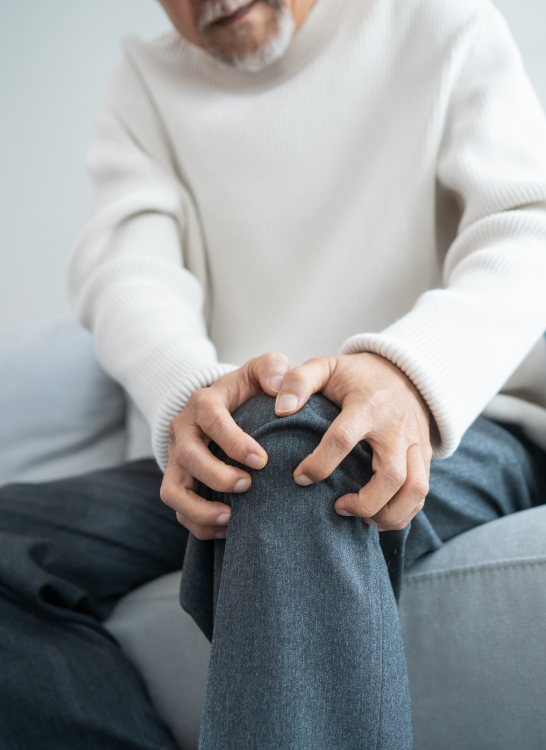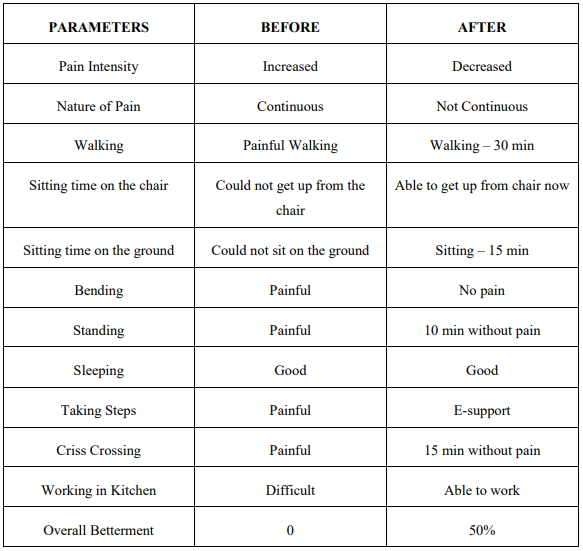
Siddha is a traditional Indian medical practice that has survived to this day in the southern parts of the country due to its emphasis on spirituality and ritual. What we have here is more than just a collection of pharmaceuticals. Many ailments that conventional medicine cannot address are cured by Siddha therapy. There is evidence in ancient books that the body of Siddha is the best physician since it can cure itself. The human body is easily disrupted by any maltreatment or imbalance, which may then lead to the development of many illnesses. In Yogi Munivar Siddha Medicine, illnesses are categorized according to their signs, symptoms, and etiology. All are considered to be the humoral foundation for disease classification. It is said that Uthiravatha suronitham is an illness in which Vatha, Pitta, and Kapha are all disturbed. Uthiravatha suronitham is highly similar to Osteoarthritis. During this chronic autoimmune inflammatory illness, the body's immune system erroneously assaults healthy tissues and is defined by symptoms that often manifest in both of a person's joints. Uthiravatha suronitham swelling of the ankle, knee, and other joints, acute pain in the smaller joints, morning stiffness, and emotional discomfort are all symptoms of Osteoarthritis.
Varman Therapy is a treatment used in the Siddha medical system that helps treat musculoskeletal problems. Varmam refers to stimulating the Pranic energy centers in the body for therapeutic purposes. In pain treatment, a straightforward, non-invasive, and drug-free option is Varma therapy. When administered daily, the treatment takes less time and has longer-lasting effects.
We provide a case study of a patient treated with Uthiravatha suronitham Siddha Varmam after being diagnosed. In this study, we aim to determine whether a man who has been suffering from Uthiravatha suronitham for two years can experience a reduction in pain and an improvement in his ability to perform daily tasks after adopting the Guidelines for the practice of Siddha Vaidyas Siddha Varman therapy.
On April 6, 2022, a 55-year-old female patient from Guntur, who was residing there, sought treatment at Chakrasiddh Health Centre with significant symptoms of increasing discomfort in symmetrical interphalangeal joints of the upper leg, along with soreness and stiffness. The patient was unable to pick up and transport even little luggage. Also, the patient has been complaining of shoulder discomfort and limited mobility. The patient had acute heel and ankle joint pain and stiffness when walking. His stiffness was so bad that he could not even stretch. Examining the affected area revealed inflamed, sensitive joints.
In-depth patient history has shown that the patient has a history of Osteoarthritis, first diagnosed on April 6, 2022. At the moment, he had excruciating agony in every minor joint of his upper and lower body, both shoulders and the area just below the knees on both sides. Since January 2022, the sufferer has had intermittent pain of moderate to severe severity. He finally went to an orthopedic doctor in December 2021, when the agony became intolerable. He was diagnosed with Osteoarthritis. She followed the diet plan for a time and felt much better. Because of this, the patient's discomfort and stiffness lessened, and she continued the diet for another four months without needing any follow-up tests. In January, the patient stopped using HCQs after learning of their long-term dangers and began receiving homeopathic care instead.
However, in April of that year, 2022, the aches and stiffness returned in full force. In 2021, the patient's symptoms reached a new peak, and she once again sought help from a rheumatologist. Pain and tenderness lessened somewhat but not noticeably. Other symptoms, such as inflexibility, limited mobility, gripping problems due to weakness, and difficulties stretching, have not changed. Then he learned about Siddha Therapy and visited the outpatient clinic at Chakrasiddha Health Centre, an alternative medical facility. Extensive testing was done, including a thorough review of the patient history. The patients had stopped taking their medications four days before their OPD appointment, so they were in a state of drug-free limbo when they arrived for their consultation.
Patients were asked to fill out the Health Assessment Questionnaire-Disability Index (HAQ-DI) and the Visual Analog Scale for Pain and Quality of Life (VAS) before and after therapy.
As of April 6, 2022, treatment has begun, and it consists of working and altering concerns, i.e., energy points without using Varman Points or any other drug. In addition, the patient was instructed to follow a diet designed for people with Osteoarthritis. The patient was so afraid of not following the diet plan that he began it on day 2. On day 2 of therapy, acupuncture was applied to both knees at the end and Varman points. Three days into therapy, the patient could already tell a change. A trained physiotherapist recommended stretching exercises to increase the patient's flexibility, and the patient reported a significant improvement in morning stiffness and discomfort. The comprehensive therapy began on the fifth day when the healers began consistently attending the Varman Points of all the main joints in the upper leg. The patient reported feeling better about all the problems mentioned earlier during the treatment since she reported this improvement via frequent feedback. After 15 days of therapy, the patient reported a 50% reduction in knee discomfort and a noticeable increase in joint leg flexibility. Even after 15 days of therapy, the knee discomfort remained modest but had decreased in severity.
Nonetheless, the patient's pain-free walking distance increased. Consequently, knee joint reactivation of Varman points was prioritized, with stretching coming in a close second. Patients report complete relief from knee discomfort on the last day of therapy.
Four months into therapy, patients reported a 50 percent decrease in pain on a visual analog scale. The handicap has been lessened. The pain was also decreased on the HAQ VAS. He could resume his regular activities since his mobility had increased. Below is a second chart, organized by symptoms, made by the center's staff.
For epidemiological reasons, radiographic appearance has long been used to diagnose Osteoarthritis (OA) of the knee. Statistics suggest that between 14 and 30 percent of those over 45 have confirmed knee OA, and this percentage rises significantly afterward. Osteoporosis is the most common radiographic characteristic of OA at the knee joint, and this feature is emphasized in the most generally used definition of OA. According to recent investigations, osteophytes are the most accurate radiological marker for knee OA in the general population. Reliability in identifying early disease symptoms is the most crucial part of any early diagnosis of OA; an early definition of OA is critical for all investigations of secondary disease prevention. Radiological sources state that 'spiking' or angulation of the tibial tubercles is an accurate indicator of early OA of the knee. A study of the patient confirmed that peaking of the tibial tubercles was a hallmark of established OA. This research aimed to determine whether radiologists' reports of solitary spiking of the tibial tubercle are valid indicators of early OA in the knee.
Poor physical functioning, social connections, and pain experience have all been linked to Osteoarthritis, according to several studies. Long-term pain relievers and steroids negatively affect the body's endocrine and nervous systems. So, Varmam Therapy may play a significant role in lowering the pain and enhancing the quality of life without having any intervention of oral medications and topical gels/oils and so has no adverse effects. It might also be used with other treatments as part of an interdisciplinary team effort to lessen suffering, increase mobility, and enhance the overall quality of life.
Standard atlas criteria, such as the osteophyte score, are used to diagnose knee OA. In our study, these established measures were linked to tibial spike angulation. This correlation was not seen when looking at the shrinking of joint space. For a radiological finding to be clinically significant, it must be linked to the patient's complaint of knee discomfort. We discovered a correlation between the angulation of lateral spikes and the existence of pain but not between spike height on the medial or ipsilateral sides of the brain and the presence of pain.

© 2023 by Chakrasiddh. All Rights Reserved.